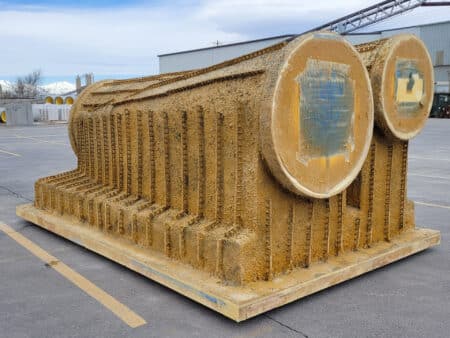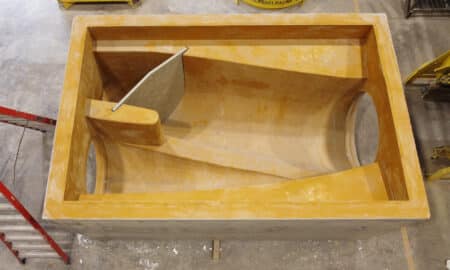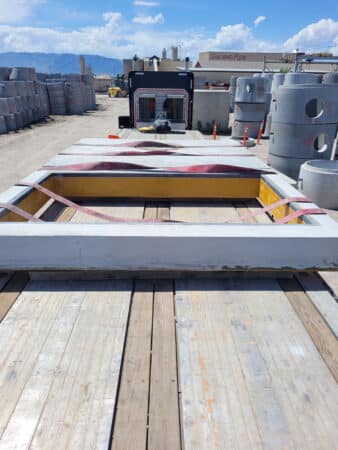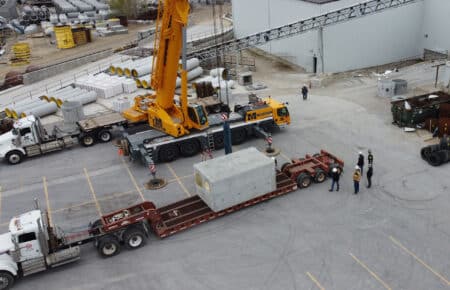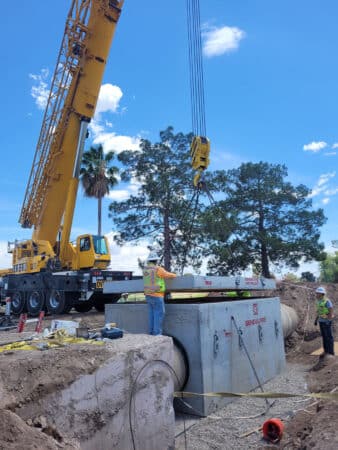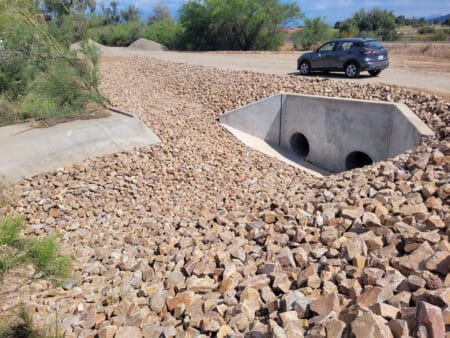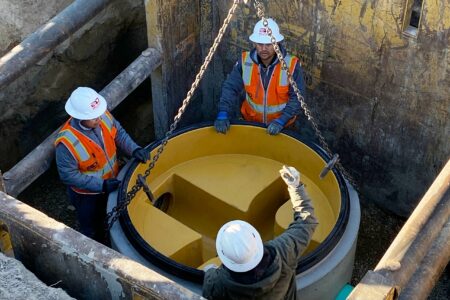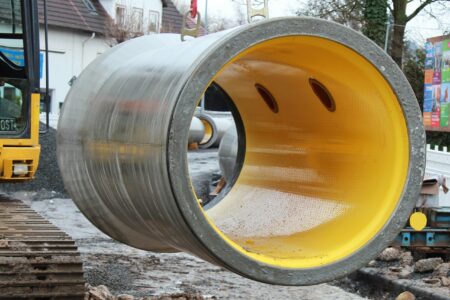NW Outfall Siphon Rehabilitation
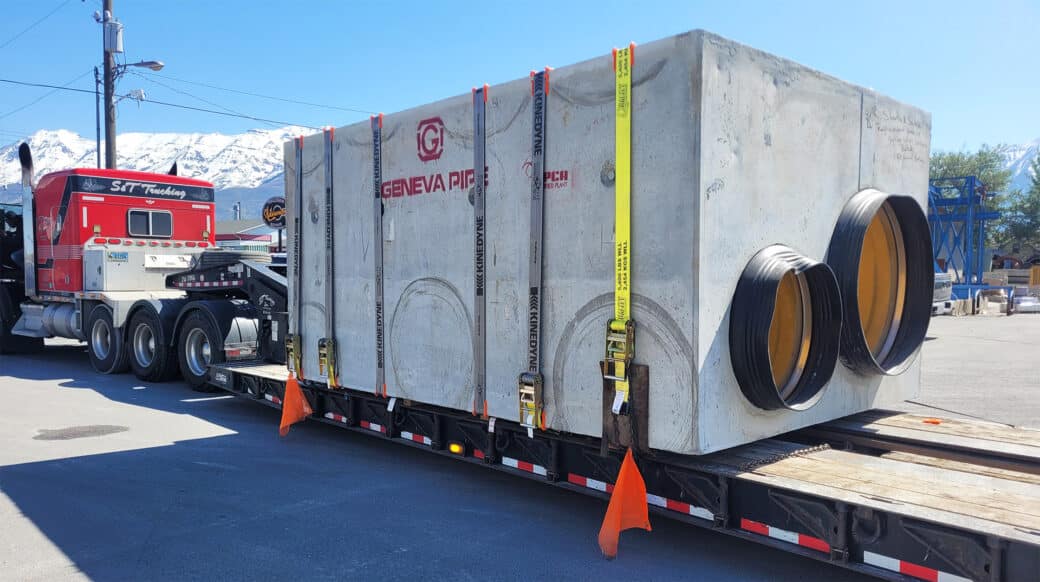
Specifications
Contractor
Egnineer Firm
Owner
The Pima County Regional Wastewater Reclamation Department manages and maintains approximately 3,500 miles of sanitary sewer lines, serving the City of Tucson, Arizona, and surrounding communities. One stretch of the collection system spans below the Santa Cruz River drainage basin, an area where the connecting inlet and outlet structures were deteriorating from corrosion due to caustic gases produced by wastewater flow. To support this rehabilitation project, Geneva Pipe and Precast manufactured two 8’x13’x8′ precast inlet/outlet siphon vault structures with embedded corrosion-resistant fiber-reinforced polymer (FRP) liners. The custom structures include FRP-lined precast lids with hatch accesses and manhole lids in each. An internal weir plate is installed inside the inlet structure.
The structures divert and direct upstream wastewater through two smaller pipelines to increase velocity through an inverted siphon. Corrosive elements from wastewater breakdown can be exacerbated through turbulence, increased temperatures, long transit times, stagnant water, and other factors. This inverted siphon is at high risk for corrosion, as it is located in one of the hottest parts of the country. It operates through increasing wastewater velocity, is a major arterial line for the city (high flows), and in periods of low flow, has stagnant water which can reach septic conditions. The new FRP-lined structures combine the durability and strength of reinforced concrete with the corrosion protection of an embedded inert lining, providing longevity to a critical junction in Pima County’s sanitary sewer system.
One challenge faced with this project was the scale of the inlet and outlet structures. To date, these are the largest structures cast by the Geneva Pipe production team using a single continuous liner. Each base weighed 77,000 pounds and the lids were 18,800 pounds, for a total of nearly 44.5 tons per finished structure. To accommodate manufacturing at this scale, our team had to modify shop space, segmentally spray the FRP liners, and combine the various pieces into the final liner prior to being cast into concrete. The unique design of the structures also posed a challenge. With diverging flow paths, narrow gaps which complicated the spray application, and the installation of internal weir gates, manufacturing the single-piece liners was a complex operation. Despite these challenges, our production team rose to the occasion, successfully completing the custom-lined structures to the exacting specifications of the project.
Post-production, a crane was required to flip the structures and load them onto the truck for delivery to the jobsite. Installation also required the use of a crane to unload and set the structures in place.


